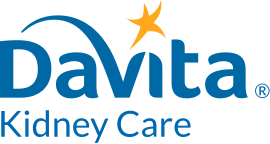The most common cause of kidney disease is diabetes. The bodies of people with diabetes do not use the hormone insulin properly or does not make insulin at all, so insulin injections or other diabetes medications are required. Because insulin helps keep the amount of sugar in the blood at a normal level, people with diabetes are at risk for both low blood sugar (hypoglycemia) and high blood sugar (hyperglycemia), especially when there are changes in diet, activity or medications. Blood sugar below 70 mg/dL is considered low.
Kidney disease and the risk for low blood sugar
The greatest risk of low blood sugar occurs in someone who has both chronic kidney disease (CKD) and diabetes. Whether or not someone has diabetes, a person with CKD is at risk for low blood sugar because of changes in appetite and meal routine. When kidney function declines insulin and other diabetes medications remain in the system longer because of decreased kidney clearance. For a person with diabetes, insulin and other diabetes medications that lower blood sugar may require an adjustment to prevent low blood sugar.
Causes of low blood sugar
Common causes of low blood sugar include:
- Skipping meals or waiting too long to eat
- A decrease in usual food intake because of poor appetite
- Taking too much insulin or diabetes medicine
- Receiving insulin or diabetes medicine at the wrong time
- Increasing physical activity
- Drinking alcoholic beverages
People with chronic kidney disease sometimes experience a loss of appetite that can lead to skipping meals or not eating enough. This often causes a drop in blood sugar.
Symptoms of low blood sugar
Some of the symptoms of low blood sugar include the following:
- Headache
- Tiredness
- Weakness
- Sweating
- Feeling shaky
- Feeling hungry
- Feeling anxious or nervous
- Feeling cranky
- Confusion
- Blurry or double vision
- Rapid or pounding heartbeat
Some people with low blood sugar may not always experience these symptoms. If the sugar level falls too low, a person can sometimes faint, have a seizure or go into a coma.
Preventing low blood sugar
For people with diabetes, there are ways to help prevent low blood sugar.
- Eat on a regular basis and follow the meal plan prescribed by the doctor and renal dietitian.
- Follow a "sick day eating" guideline when you don’t feel like eating.
- Check blood sugar levels regularly.
- Take the recommended dosage of diabetes medicine at the recommended time.
- Contact the doctor if frequent low blood sugar levels occur. A medication adjustment may be needed.
- Don’t drink alcohol without eating food. Have no more than one or two drinks.
- When exercising, stop and check blood sugar. Snacks and medicines should be on-hand and taken as needed. Medications may sometimes need to be adjusted before rigorous exercise.
- Ask the healthcare team about eating a snack at bedtime to help keep blood sugar from dropping overnight.
The healthcare team will work customize the dose and timing of medications to go with the diabetes and CKD patient’s daily routine and meal plan. If a meal is skipped or a person exercises more or less than usual, the result can be low blood sugar. Also, if you plan to switch dialysis treatments, you may need to check your blood sugar more often.
Summary
A person with kidney disease is at risk for low blood sugar. It is important for patients to learn the symptoms of low blood sugar and develop ways to help prevent it. Patients with diabetes must work with their healthcare team and be vigilant about following the team’s recommended meal and exercise plans. The greatest risk of low blood sugar occurs in someone who has both kidney disease and diabetes, so it’s important to maintain a healthy lifestyle that helps prevent so blood sugar levels.
This article is for informational purposes only and is not intended to be a substitute for medical advice or diagnosis from a physician.


